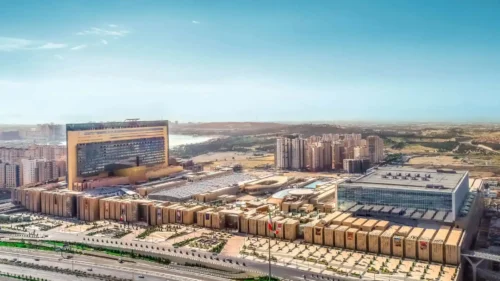
وبلاگ سپهران | Tourism | Religious Tourism
Religious tourism is one of the oldest and most common forms of travel, dating back to the dawn of human civilization and its religious culture. This type of travel, categorized as pilgrimage journeys, has a long history in all human and religious societies. Consequently, it has been a forerunner of another type of travel, which is commercial travel and has a continuous presence in historical trends. In this article, we will introduce this type of tourism and its role in Iran, so stay tuned with the Sepehran blog.
In a general definition, This tourism is a form of tourism that is individually or collectively undertaken for the purpose of pilgrimage or religious propagation.
The development requirements of this type of tourism are different from other types of tourism due to its internal components. This difference ranges from the travel destinations to the tools and facilities, and even the type of tourist. The destinations of religious tourism are places that have been endowed with sacred significance by the religious history or beliefs of nations, societies, or religions.
Religious tourism is one of the significant forms of tourism with a rich historical background. In this type of tourism, individuals or groups travel to sacred and religious places due to its nature. It also helps maintain a balance between religious, historical, and cultural aspects, differentiating it from regular tourist travel.
In conclusion, religious tourism is an essential segment of the global tourism industry, significantly impacting culture, economy, and the development of religious sites. By combining faith, history, and culture, it provides unique experiences for travelers.
There are numerous religious sites around the world recognized as legitimate tourist destinations. These places hold significance for believers of various faiths and are also attractive to tourists interested in history, culture, and architecture.
These locations are just a few examples of the historical churches and mosques renowned for their unique history, art, and architecture. They hold great value for visits and contribute to the flourishing of religious tourism.
This tourism, as a distinct form of travel rich in religious, cultural, and historical values, comes with its own set of considerations. If you intend to visit religious sites, you should keep in mind specific tips and guidelines to ensure an optimal and positive experience. Below are some tips and guidelines for religious tourism:
Religious tourism can be a highly spiritual and historical experience. By following these guidelines, you can have a positive experience during your religious travels and show respect for the religious and cultural values you encounter.
One of the unique characteristics of religious tourism is the inability to significantly expand the development of tourism destinations. In other words, countries cannot define new destinations on a large scale for this type of travel and change tourism destinations solely by relying on infrastructure development.
This inelasticity is due to the substantial share that religious tourists allocate to their travel portfolios and expenses. This presents a prime opportunity that only a handful of countries are taking advantage of.
Apart from the high potential in pilgrimage, Religious tourism encompasses various other categories. including trips aimed at visiting religious sites, appreciating religious architecture, and participating in religious ceremonies by individuals outside the realm of that faith.
However, the limitations that typically exist in the path of developing such tourism are as numerous as its capacities. Today, considering the irreplaceable role of this place in the development of pilgrimage sites and the promotion of religious values, addressing and overcoming these limitations has become a focal point.
As a result, many religious sites, previously regarded as sacred places, have reopened under certain conditions and regulations.
The development of religious tourism, like other types of tourism, has its requirements and resources that can be explored and examined. Today, we understand that the development of the capacity for tourism in any location is contingent upon sustainable development and has a profound impact on improving the quality of life for indigenous people, as well as creating direct and indirect employment opportunities.
This matter is particularly significant in religious cities because, in addition to generating revenue and being economically beneficial, it leads to changing destructive mindsets among individuals from other countries and religions regarding existing beliefs.
Islamic tourism, with its diverse subcategories of religious tourism, includes Halal tourism, Shia tourism, pilgrimage tourism, visits to Islamic architecture and holy places, as well as participation in religious rituals, holding significant potential. Therefore, it can serve as a cornerstone for the sustainable development of Muslim lands.
Furthermore, the development of this type of tourism, particularly in Iran, has led to the growth of various other forms of tourism. Many pilgrims and religious tourists, in addition to visiting holy sites, engage in activities such as nature tourism, historical tourism, and more. They undertake numerous journeys in the vicinity of religious cities, which, in turn, greatly contributes to their development.
Religious tourism is a unique experience that allows individuals to delve deeper into the spiritual and religious world. These types of journeys have positive effects on people’s spirits and minds and can enrich one’s life.